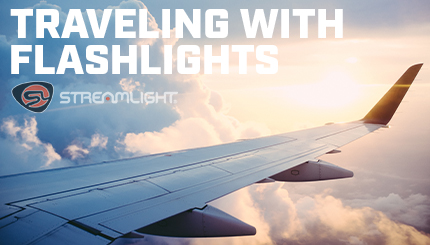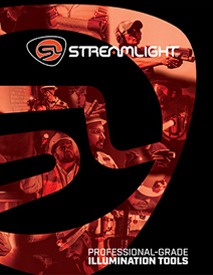Community Blogs Detail
Please wait while results are retrieved...
Taking a flashlight with you when you travel can provide you with a valuable lifesaving tool. It can act as a defensive tool to disorient an attacker or an implement to be able to provide lifesaving first aid to someone in dark environmental conditions. There are also restrictions and best practices that you should be aware of when traveling by air in the United States or overseas.
A few years ago, I was flying within the United States. We passed 35,000 feet and settled into our red eye flight from Philadelphia to the West Coast. The flight crew dimmed the cabin lighting and most people prepared themselves for a six-hour nap. About an hour into the flight, the man across the aisle from me stood up from his seat, presumably to use the restroom. I looked over at him just in time to see his eyes roll back in his head. He lost consciousness and dropped like a sack of potatoes, hitting his head on the floor. I got out of my seat to help the man and within seconds had flight attendants behind me and in front of me. Being that it was dark, it was difficult to see the man and assess his injuries. Luckily for me, I always travel with a Streamlight® in my pocket. I always have a light in my carry-on when going through security. I then put it into my pocket for the flight. On this particular trip I was carrying a ProTac® 1L-1AA. An ER doctor happened to be on the flight as well and I gave him my light so that he could help the unconscious passenger. After the passenger regained consciousness and was doing better, I nearly had to pry the light out of the doctor’s hand, he liked it so much.
This is just one example of how carrying a flashlight has come in handy while traveling. If you’re like me, you use a flashlight almost every day and it’s even more useful when traveling. But what are some of the restrictions and best practices while traveling with a flashlight. Always check with the TSA prior to traveling as rules may change from the writing of this article. As of writing this, the TSA allows you to carry a handheld flashlight(s) on aircraft with any type of battery (Alkaline, Lithium, NiCad etc.) The restriction that the TSA does have, is that you cannot transport lithium batteries in your checked baggage. They must be in your carry on in the passenger compartment, where you can access them if there is a fire. The other restriction is on weapon-mounted lights. You are not allowed to carry any device that can attach to a firearm in your carry-on bags. I have been told by the TSA that TLR series lights and other weapon mounted lights need to be placed into your checked baggage, but their lithium batteries must be removed and placed into your carry-on bags.
Currently, I rotate through several different types of everyday carry (EDC) lights. My current go-to is the ProTac® 2L-X USB. I use a rechargeable battery in the light while traveling but keep a spare set of CR123’s in my bag in case I don’t have time to recharge the SL-B26® battery. Having the flexibility to use different types of batteries is key when traveling. My other favorite light to carry when traveling is the ProTac® 1L-1AA, especially when I travel overseas. This light can use either a CR123 lithium battery, a lithium AA battery or an alkaline AA battery. Finding lithium batteries overseas can be difficult and expensive. But finding a standard AA alkaline battery should not be too difficult at all.
Another option when traveling is a USB rechargeable light such as the MicroStream® USB, MacroStream® USB or the Wedge®, with its USB-C rechargeability. It’s nice to have the option to recharge your light from a wall plug, airplane power port or rechargeable pack. If you’re traveling in the backwoods, you can recharge our lights or battery packs from third party packable solar panels. By traveling with USB rechargeable lights, you’re able to travel with fewer back up batteries that you may need to carry with a non-rechargeable product.
One of the keys to being prepared when traveling is to have redundancy in your lighting setup. The old adage, “two is one and one is none” holds so much more value when you’re traveling and away from your normal support structure. As a general rule of thumb, I always have at least two handheld lights with me when I travel. I typically also carry a headlamp as well, such as our Enduro® Pro USB. Recently a friend of mine was in the backwoods on a bear hunt in the Cascade Mountain Range. While hiking through an area of heavy vegetation and branches, one of his pouches on his pack was snagged and pulled open. His Sidewinder Compact® II fell out, lost to the mountain forever. He only noticed that it was missing hours later as night was falling. Luckily for him he was traveling with a spare headlamp, an Enduro® Pro and a couple of handhelds. Once of those was a MicroStream® USB that he could attach to his hat if needed.
Certainly, in my friend’s case, redundancy in lighting was paramount to his survival. Setting up a camp and a fire in pitch dark with sub-freezing temperatures would have been difficult without lighting. Wherever your travels take you though, make sure that you have the flashlights that you need to help yourself and to help others. If you have any questions about which light is best for you, reach out to us so we can help you plan your next adventure!
PHONE
1-800-523-74881-610-631-0600
FAX
1-800-220-70071-610-631-0712


